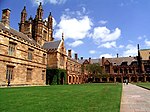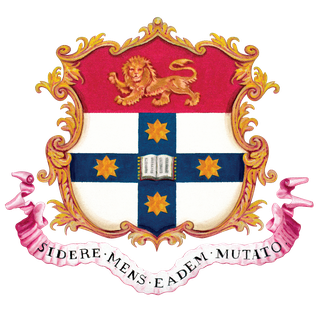
The University of Sydney (USYD), also known as Sydney University, or informally Sydney Uni, is a public research university located in Sydney, Australia. Founded in 1850, it is the oldest university in Australia and is one of the country's six sandstone universities. The university comprises eight academic faculties and university schools, through which it offers bachelor, master and doctoral degrees.
The University of Technology Sydney (UTS) is a public research university located in Sydney, New South Wales, Australia. Although its origins are said to trace back to the 1830s, the university was founded in its current form in 1988. As of 2022, UTS enrols 44,615 students through its 9 faculties and schools.

The Royal Prince Alfred Hospital is a large teaching hospital in Sydney, Australia, located on Missenden Road in Camperdown. It is a teaching hospital of the Central Clinical School of the Sydney Medical School at the University of Sydney and is situated in proximity to the Blackburn Building of the university's main campus. RPAH is the largest hospital in the Sydney Local Health District, with approximately 1200 beds. Following a $350 million redevelopment, the perinatal hospital King George V Memorial Hospital has been incorporated into it.
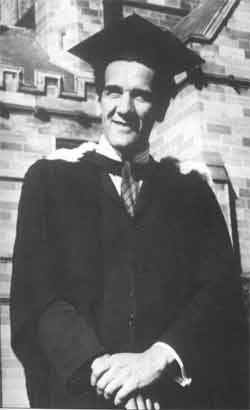
Charles Nelson Perkins, usually known as Charlie Perkins, was an Aboriginal Australian activist, soccer player and administrator. He was the first Indigenous Australian man to graduate tertiary education, and is known for his instigation and organisation of the 1965 Freedom Ride and his key role in advocating for a "yes" vote in the 1967 Aboriginals referendum. He had a long career as a public servant.
The Lions Eye Institute (LEI) is an Australian medical research institute affiliated with the University of Western Australia. It was established in 1983 with support of the Lions Clubs of Western Australia and headquartered in the Perth suburb of Nedlands, Western Australia. The LEI is a not-for-profit centre of excellence that combines an ophthalmic clinic with scientific discovery developing techniques for the prevention of blindness and the reduction of pain from blinding eye conditions.
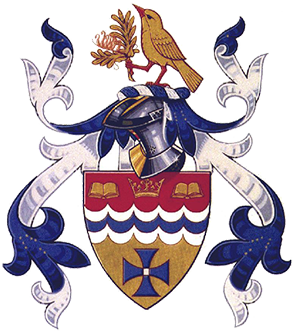
The Royal North Shore Hospital (RNSH) is a major public teaching hospital in Sydney, Australia, located in St Leonards. It serves as a teaching hospital for Sydney Medical School at the University of Sydney and has over 600 beds. It is the principal tertiary referral hospital for the Northern Sydney Local Health District. Its primary referral area accommodates 5.7% of the Australian population or 17% of the NSW population.
The Kolling Institute is located in the grounds of the Royal North Shore Hospital in St Leonards, Sydney Australia. The institute, founded in 1920, is the oldest medical research institute in New South Wales.

The Victor Chang Cardiac Research Institute (VCCRI) is an Australian non-profit medical research facility that is dedicated to finding cures for cardiovascular disease. With headquarters located in Darlinghurst, New South Wales, the research hub is home to more than 20 research laboratories and the Victor Chang Cardiac Research Institute Innovation Centre. The institute's mission is "the relief of pain and suffering, and the promotion of well-being, through an understanding of the fundamental mechanisms of cardiovascular disease". Its key research is focused on the prevention and treatment of various heart diseases, including arrhythmia, cardiac arrest, cardiomyopathy, congenital heart disease, heart attack, heart failure, high cholesterol, obesity, spontaneous coronary artery dissection (SCAD) and stroke.
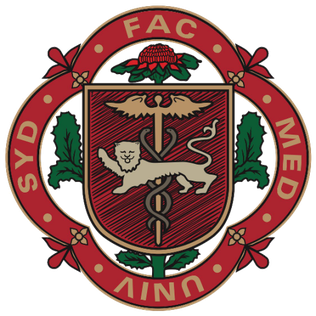
The University of Sydney School of Medicine, also known as Sydney Medical School (SMS) is the graduate medical school of the University of Sydney. Established in 1856, it is the first medical school in Australia. In 2018, Sydney Medical School joined the newly formed Faculty of Medicine and Health at the University of Sydney. SMS is ranked 19th in the world and second in Australia in the 2021 QS Subject Rankings for medicine.

The Faculty of Science is a constituent body of the University of New South Wales (UNSW), Australia. It is UNSW's second largest Faculty. It has over 400 academic staff and over 700 research staff and students.
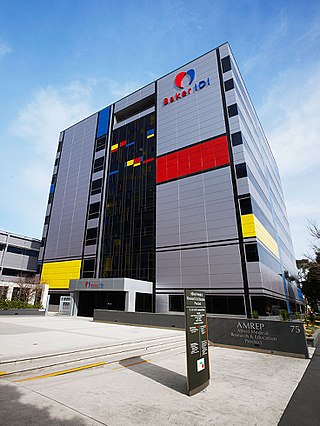
The Baker Heart and Diabetes Institute, commonly known as the Baker Institute, is an Australian independent medical research institute headquartered in Melbourne, Victoria. Established in 1926, the institute is one of Australia's oldest medical research organisations with a historical focus on cardiovascular disease. In 2008, it became the country's first medical research institute to target diabetes, heart disease, obesity and their complications at the basic, clinical and population health levels.

ANZ Bank Centre is a premium grade commercial office building in Sydney, New South Wales, Australia. The skyscraper measured to the top of its roof is 180 metres (591 ft) tall, with an architectural height of 195 metres (640 ft).
Richard Francis-Jones is a highly awarded Australian architect. He is the design director of the Multidisciplinary design practice Francis-Jones Morehen Thorp (FJMT). He is a Life Fellow of the Australian Institute of Architects, an honorary fellow of the American Institute of Architects. and a Member of the Royal Institute of British Architects.
Francis-Jones Morehen Thorp (fjmt) is a multi-disciplinary Australian design studio established in 2002 and noted for design excellence and a commitment to enhancing the public realm. fjmt has a reputation as an ideas-driven practice "with an agenda for strong public engagement and masterful resolution of tectonics" and the firm's work demonstrates "an extraordinary ability to uncover the real and often contradictory issues and potentials of a project by a very careful analysis of purpose and place".

The Translational Research Institute (TRI) is Australia's first translational medical research institute dedicated to translating scientific discoveries into applications for medical practice.

The Victorian Comprehensive Cancer Centre (VCCC) is a multi-site, multi-disciplinary specialist cancer hospital and research centre located in Melbourne, Victoria, Australia. The VCCC comprises an alliance between The University of Melbourne, the Peter MacCallum Cancer Centre, Melbourne Health, the Walter and Eliza Hall Institute of Medical Research, the Royal Women's Hospital, the Royal Children's Hospital, Western Health, St Vincent's Hospital, Melbourne, Austin Health, and the Murdoch Childrens Research Institute.
Diabetes, in particular, non-insulin-dependent diabetes, is prevalent in the Aboriginal and Torres Strait Islander populations of Australia. As many as 1 in 20 Australians are said to suffer from diabetes. Aboriginal people are three times as likely to become diabetic in comparison to non-Aboriginal people. In contrast with type 1 diabetes, which is a predisposed autoimmune condition, type 2 diabetes or insulin-resistant diabetes, is a preventable disease, heavily influenced by a multitude of socioeconomic factors. Sufferers of the disease are consequently more susceptible to chronic health issues, including heart disease and kidney failure. Conclusively, this has contributed to the 17 year life expectancy gap between Aboriginal people and non-Aboriginal people and has led to health inequities between Aboriginal people and non-Aboriginal people.

The New Law School building of the University of Sydney is designed by Sydney-based architectural firm Francis-Jones Morehen Thorp (FJMT). The building is located at the university's Camperdown campus in Sydney, New South Wales, Australia and was officially opened on 30 April 2009. It serves as the new building for the Sydney Law School.

Anoop Misra is an Indian endocrinologist and a former honorary physician to the Prime Minister of India. He is the chairman of Fortis Centre for Diabetes, Obesity and Cholesterol (C-DOC) and heads, National Diabetes Obesity and Cholesterol Foundation (NDOC). A former Fellow of the World Health Organization at the Royal Free Hospital, UK, Misra is a recipient of the Dr. B. C. Roy Award, the highest Indian award in the medical category. The Government of India awarded him the fourth highest civilian honour of the Padma Shri, in 2007, for his contributions to Indian medicine.
Melody Ding is an Associate Professor at the University of Sydney. Ding is an epidemiologist and population behavioural scientist in Sydney School of Public Health in the Faculty of Medicine and Health at the University of Sydney. She is also a member of the Charles Perkins Centre and the Sydney Southeast Asia Centre. Ding's research aims to improve population health through epidemiological research and behavioural change.



















